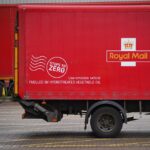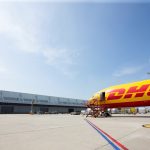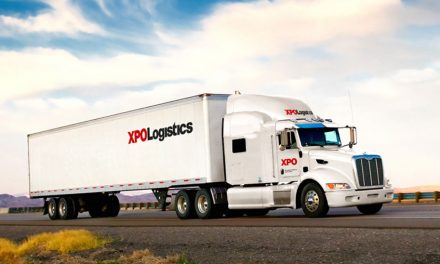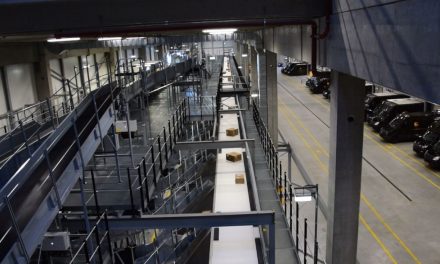
Consignia seeks to reverse trend
Despite an avalanche of adverse publicity Consignia has enjoyed some success by attracting a number of big-name retailers to its expanding logistics solutions division. From its warehouse in Swindon, Wiltshire, the company has drawn the likes of JJBSports, Homebase, mail order stationerycompany Viking and Kingfisher’s ULY operation, Screwfix, to use its ‘Deliver & Build’ service. But more important to the company’sfuture success — to help it offset its broader problems– is its fledgling’ reverse logistics’service. It has already signed up a major high street entertainment retailer, as well as Safeway to use the service. It is also close to bringing on board a number of major book retailers.
Although ‘Deliver & Build’ has been around for some time, it is the more recent growth in home shopping and home delivery that has helped it to begin to attract some of the UK’s major retailers. It is effectively an outsourced fulfilment service that involves an element of construction. For example, forJJB Sports, one of its multi-gym products or snooker tables can be delivered and then built at a customers home by two Consignia representatives. All stock is held at a Consignia depot before being dispatched following a pre-call to the customer’s home to check that they are able to receive the goods. After delivery and construction in the home, the Deliver & Build team take away unwanted packaging.
Plan’s major plank
Developing these services with the likes of new clients, such as JJB, is particularly important to Consignia, since it regards them as a major plank in its plan to increase the range of services that it offers to its corporate clients. Consignia operations manager Tim Hindley says: "At JJB, this is our first step into the company and so these are tentative moves for such new customers to test the reliability of our services. It is a drip-feed process. We need to get their confidence and build on that, and then offer them our range of other services." Prior to Christmas, Homebase also signed up to the service, although this is limited to simple delivery, with the build aspect likely to kick in shortly as the group implements its plan to extend the range of furniture that it stocks. In offering such services for corporate clients, Consignia has radically changed the 37,200 sq m warehousing operation at Swindon and is effectively selling aisle space to external parties — a radical diversion from the group’s policies of the past. Around 5,580 sq m is up for grabs, with various methods of payment considered, Hindley says: "We look at a retailer’s product profile and see if they want to be charged per sq m, or by the number of goods that we pick [and deliver] for them." Part of the other 31,620 sq m of warehouse space at Swindon has been set aside for the growing ‘reverse logistics’ solution, which Consignia believes will be an extremely important driver of revenue in the future. It grandly claims it is the solution to the retail industry’s universal problem of handling returned goods. "Most companies have a problem with returns. Retailers have struggled with it for years, but no one wants to talk about it because it is all about write-downs, and it makes it look like they have a problem," explains Hindley.
Software handles returns
The solution is the result of a revenue-sharing venture with US-based ReTurn Logistics a company with 15 years’ experience handling returns for retailclients in the US. Its backbone is a unique software package called DART (Direct Automated Returns Tracking), around which Consignia has built its returns infrastructure. According to Hindley, ReTurn Logistics had been considering entering the UK market for some time and since they knew that growth would be substantial, they needed a big player to do it with, like us. The partnership makes it possible for retailers to improve their supply chain efficiency, reduce costs and quickly recoup their investment on returned goods. Since returns for the average retailer can run atas much as 20 per cent – for the mail order and high fashion operators this can be as high as 50 percent – the solution has the potential to fill the somewhat dwindling coffers at Consignia.
The service involves returned goods from retailers’ stores or depots being sent directly to Consignia's dedicated warehouse, where they are scanned by the DART software. This recognises all varieties of barcodes from suppliers. Then, in communication with the various manufacturers that originally supplied the goods. The software can determine electronically the amount of goods to be returned to each specific manufacturer, how many can be re-sold by the retailer through other channels and how many can be written-off and destroyed.
Under the present system, returns processing is complicated by the different agreements that a retailer will have made for different products with different manufacturers. Deals will have been struck for individual products to be returned on either a straightforward sale-or-return basis; an agreement to only return a certain percentage of unsold goods; or they may have been bought outright, meaning no returns to the manufacturer are possible. Another irritant is the issue of returning faulty goods.
Disputes commonplace
With this system in place, it is little suprise that disagreements between retailers and suppliers are commonplace. ReTurn Logistics UK general manager Norman Bearcroft says: "It is to do with trust, and we're an independent third party with no allegiance to either group. Retailers and manufacturers can concentrate on their businesses" For the retailer, it not only frees up a great amount of valuable space both in its stores and depots, but critically, it enables it to receive credits much quicker from the manufacturer for the unsold goods it has returned.This, therefore, enables it to more efficiently re-stock its stores with products that its customers demand. "The money gets back to the retailer very quickly. There is a huge value in this. And with faulty goods too, we release millions of pounds in the US for retailers, adds Bearcroft. If this is successfully replicated in the UK, then it will go some way to not only answering the prayers of many retailers, but also add some much needed lustre to the Consignia name.













